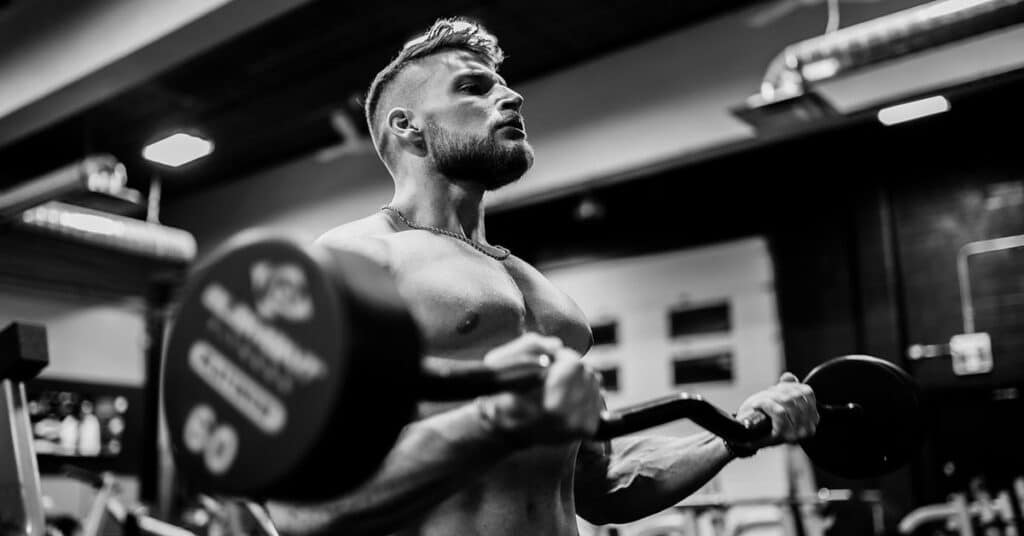
15 Best Bicep Exercises to Build Incredible Muscle Mass and Strength
Bicep exercises are an effective way to build muscle and mass, and can help to improve grip, forearm and pulling strength. They will also assist the overall health of the connective tissues that support the elbows in gymnastics, deadlifts, cleans and other exercises.
Stronger biceps will support general upper body strength and can be highly useful for outdoor fitness activities such as climbing and kayaking.
- Barbell Bicep Exercises
- Dumbbell Bicep Exercises
- Bodyweight Bicep Exercises
- Cable Bicep Exercises
- Other Bicep Exercises
- BARBELL BICEP EXERCISES
- 1. BARBELL CURL
- 2. REVERSE / SUPINATED GRIP BENT OVER ROW
- 3. STANDING WIDE GRIP BARBELL CURL
- 4. SEATED EZ PREACHER CURL
- DUMBBELL BICEP EXERCISES
- 5. STANDING DUMBBELL BICEP CURLS
- 6. SEATED DUMBBELL CONCENTRATION CURL
- 7. SEATED INCLINE DUMBBELL CURL
- 8. HAMMER CURL
- 9. SEATED INCLINE HAMMER CURL
- 10. DUMBBELL ZOTTMAN CURL
- 11. KNEELING SINGLE ARM DUMBBELL CURL
- BODYWEIGHT BICEP EXERCISES
- 12. CHIN UPS
- OTHER BICEP EXERCISES
- 13. BICEP CABLE CURL
- 14. BICEP OVERHEAD CABLE CURL
- 15. STANDING RESISTANCE BAND HAMMER CURL
- BICEP EXERCISES
The biceps (bi = two) consist of two muscles, the long head and the short head biceps. The long head is on the outside of the arm and the short head is located on the inside.
The long head is best targeted using bicep exercises with a narrow grip (inside shoulder width). The short head is utilised more with wider grip bicep exercises.
The biceps include two other major muscles—the brachialis and brachioradialis. The brachialis sits under your biceps and the brachioradialis is a long muscle that runs from deep inside the center of your upper arm to the center of your forearm. Along with the biceps, these two other muscles work together to flex the arm at the elbow.
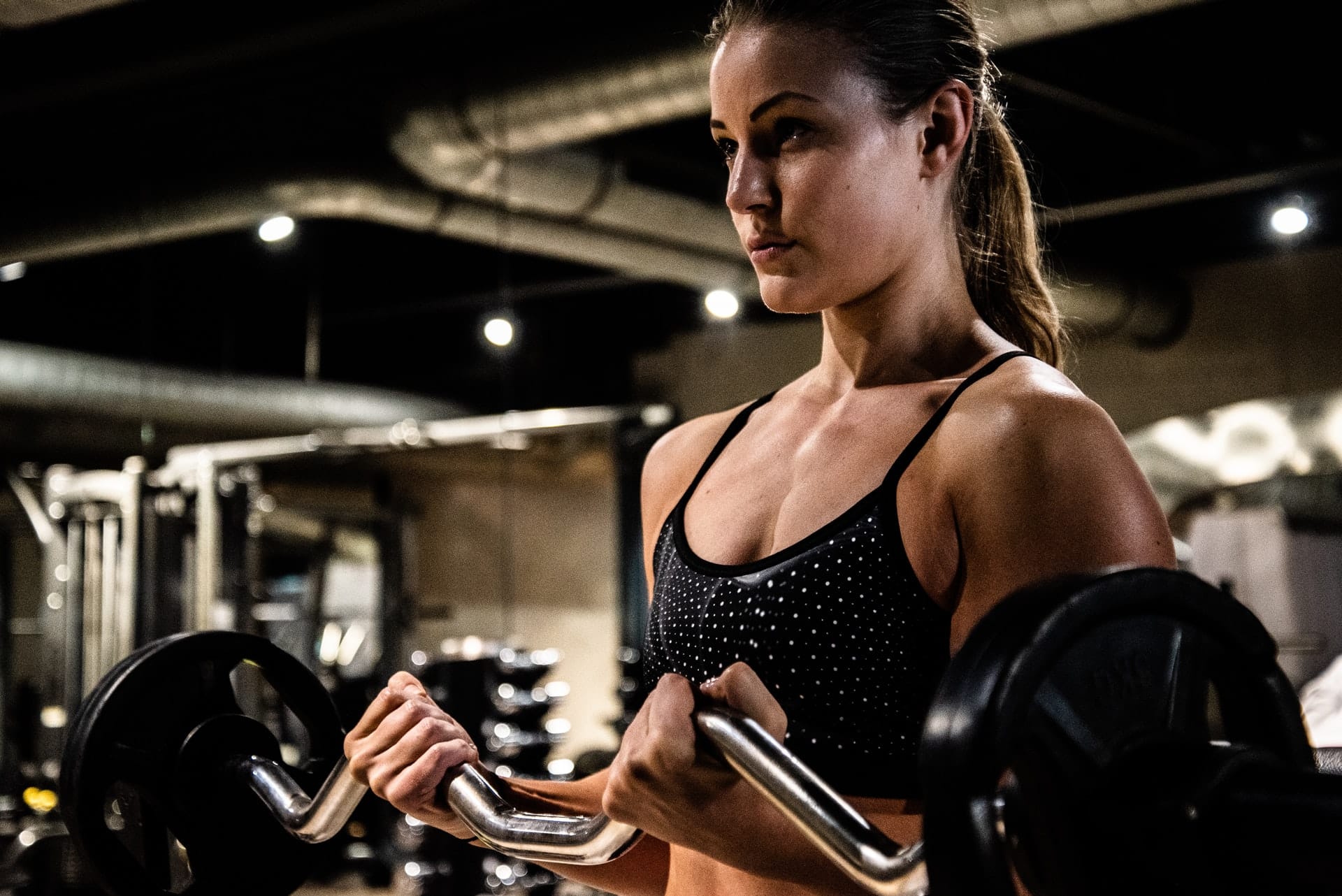
The following bicep exercises will target and strengthen your arms (including ligaments, tendons and muscles) in different ways depending on your goals and training style.
Barbell Bicep Exercises
- Barbell curl
- Reverse / supinated grip bent over barbell row
- Standing wide grip barbell curl
- Seated EZ preacher curl
Dumbbell Bicep Exercises
- Standing dumbbell bicep curl
- Seated dumbbell concentration curl
- Seated incline dumbbell curl
- Dumbbell hammer curl
- Seated incline hammer curl
- Dumbbell Zottman curl
- Kneeling single arm dumbbell curl
Bodyweight Bicep Exercises
- Chin Up
Cable Bicep Exercises
- Bicep cable curl
- Bicep overhead cable curl
Other Bicep Exercises
- Standing resistance band hammer curl
BARBELL BICEP EXERCISES
1. BARBELL CURL
Benefits of the Barbell Curl
The barbell curl is one of the simplest bicep exercises and ways to pack on muscle for your arms. The ability to add higher amounts of loading to bar makes this exercise still one of the most foundational biceps exercises available.
The overall stimulus of overloading a muscle group and lifting to failure is hard to beat. Use the barbell curl as a foundational bicep exercise in your training. You will be able to move more weight with this exercise that almost all other bicep exercises (with the exception of the next barbell exercise), so it will help to build general arm size and strength
How to do the Barbell Curl
- Stand behind the loaded barbell with feet slightly wider than hip width
- Bend down and deadlift the weight up to the standing, starting position
- Hands slightly wider than hip width. palms upwards (supinated) and thumbs griping over the top of the bar
- Keep your shoulders back and down, chest high, and head in a neutral position looking straight forward
- Inhale and brace the core, glutes and grip
- Curl the bar up by squeezing the biceps. Keep the upper arms pressed into your ribs, and your elbows in a fixed position
- Maintain all the force in the biceps as you curl the bar to chest level
- Squeeze your biceps at the top and hold the contraction for 2 seconds
- Slowly lower the weight down. Keep the upper arm and elbows locked in place. Maintain constant tension on the biceps
- Repeat for the desired number of reps
Training Tips for Barbell Curls
Don’t use momentum. Be strict with your movement. Leave your ego at the door, use less weight, and focus on strict form and muscle connection.
Don’t bring your elbows forwards during the movement.
2. REVERSE / SUPINATED GRIP BENT OVER ROW
Benefits of the Reverse / Supinated Grip Bent Over Row
Reverse / supinated grip bent over rows are a powerful way to build strong arms and a powerful core, as you must brace the abs and hold a solid position while pulling the bar to your torso. The exercise will develop back strength as well.
The underhand (supinated) grip requires significant work from the biceps and establishes higher direct loading than any other isolation biceps exercise.
While metabolic stress and longer sets play a vital role in bicep muscle growth (hypertrophy), it’s important to also stimulate fast-twitch fibres with heavy loads. The reverse / supinated grip bent over row does a good job of performing this function.
How to do the Reverse / Supinated Grip Bent Over Row
- Bend down and grip the barbell with a double underhand grip, slightly wider than shoulder width
- Inhale, brace the abs, core and glutes
- Deadlift the bar up to a hang position just below the knees
- Activate the shoulders and establish a solid neutral position with your spine
- Drive the elbows back until they’re even with your body and the bar nears your abdomen. Keep the chest out and proud while pulling the shoulders down and back
- Squeeze for maximal muscular contraction at the top of the movement for one second. Slowly lower the weight in a controlled way back to the starting position
Training Tips for the Reverse / Supinated Grip Bent Over Row
Don’t pull the elbows too far back. Some lifters pull the bar too far past the mid-line. Whilst this may establish a feeling of increased tightness in the muscles, it is not ideal because the humerus may migrate forward into the anterior socket of the shoulder, possibly causing damage and dysfunction.
Break the plane of the body with the elbows but don’t go further.
Don’t let the shoulders cave forwards.
If you follow these guidelines you will maximise strength and muscle gains whilst protecting the shoulder joints from injury.
3. STANDING WIDE GRIP BARBELL CURL
Benefits of the Standing Wide Grip Barbell Curl
This biceps exercise adopts a wider than normal grip which enables you to externally rotate at the shoulder. This changes the position of the upper arm and places more emphasis on the short head biceps muscle.
How to do the Standing Wide Grip Barbell Curl
- Grip the barbell with your hands wider than shoulder width
- Use an underhand grip with your palms facing upwards (supinated)
- Plant your feet firmly on the floor shoulder width apart
- Deadlift the weight up to a standing, fully extended position
- Inhale and brace the core, glutes and grip
- Slowly curl the weight up as far as possible
- Squeeze the biceps at the top for one second, then slowly lower the weight back to the starting position
- Repeat for the desired number of reps
Training Tips for Standing Wide Grip Barbell Curls
Do not swing the weight or arch your back. Your body must remain fixed throughout the movement. If you use momentum then you will not get the full benefits for strength and muscle growth. If you arch your back then you will allow yourself to use more than just your arms to curl the weight which will again not give you the full benefits. Focus on great form over weight. Leave your ego out of it.
Keep your elbows pinned into your sides throughout the full range of motion. Do not allow them to shift forward when curling the weight. Focus on keeping all movement in your forearms.
4. SEATED EZ PREACHER CURL
Benefits of the Seated EZ Preacher Curl
The seated EZ preacher curl brings a number of benefits that you might not find in a conventional bicep curl. The nature of the exercise focuses attention onto the negative portion of every rep (as you lower the weight back to the starting position). This establishes a strong mind muscle connection and maximises time under tension. Two important aspects of muscle growth.
The preacher curl is practically impossible to cheat. Since the movement completely isolates the biceps, you cannot use momentum to assist reps as people often do with seated or standing bicep curls.
How to do the Seated EZ Preacher Curl
- Sit on the bench with your elbows resting on the pad
- Extend your arms and grip the EZ bar with the angles that point your hands towards each other (slightly narrower than shoulder width and on a semi-supinated angle)
- Inhale and brace the core, glutes and grip. Chest up and shoulders back
- With the body locked in place, curl the bar upwards as you flex the biceps. Pause briefly at the top of the movement and squeeze the biceps as hard you can. Hold for a count of one second. Lower slowly to the starting position whilst controlling the weight at all times.
- Repeat
Training Tips for the Seated EZ Preacher Curl
If you are new to this exercise start slowly with light weight and build up slowly. Even light weights can yield effective results if you place good emphasis on excellent form and a slow, controlled tempo.
DUMBBELL BICEP EXERCISES
5. STANDING DUMBBELL BICEP CURLS
Benefits of Standing Dumbbell Bicep Curls
The standing dumbbell bicep curl is an effective exercise to use if you want to build bigger and stronger biceps. It is a flexible exercise that you can adapt to suit the exact goals you want to achieve and is more time efficient than the alternating dumbbell curl.
- Curl the weight slightly wider than shoulder width and you will target the outer bicep.
- Curl the weight narrower than shoulder width and you will target the inner bicep.
- Twist your wrists slightly outwards and you will build the peak of the bicep
Standing dumbbell bicep curls permit wrist supination, unlike the barbell version.
How to do Standing Dumbbell Bicep Curls
- Deadlift a pair of dumbbells into the fully extended, standing position
- Feet slightly narrower than shoulder width. Twist your wrists until your palms face forwards (supinated)
- Inhale and tense the core, glutes and grip
- Bend the elbows slightly and tense the arms until you feel the biceps holding the weight of the dumbbells
- Slowly curl the dumbbells up as far as possible. Keep your elbows in the same pinned position
- Squeeze the biceps hard at the top for a count of one second. Slowly lower the dumbbells back to the starting position.
- Repeat for the pre-arranged number of reps
Training Tips for Standing Dumbbell Bicep Curls
The tension should be on the biceps at all times. Do not let them “hang” at the bottom of the exercise.
Place as much emphasis on the downward (eccentric) portion of the exercise as on the lift itself (concentric) with every rep. This will build a better mind muscle connection and increase time under tension. Both are effective tools to optimise muscle growth (hypertrophy).
Keep the tempo slow and the weight controlled at all times throughout every rep and set.
Do not let the dumbbells touch your body.
Do not swing the body as you curl the weight or use momentum in any way. The body should remain fixed and immobile at all times.
6. SEATED DUMBBELL CONCENTRATION CURL
Benefits of Seated Dumbbell Concentration Curls
The seated dumbbell concentration curl is probably the most classic single arm bicep exercise.
It’s highly effective at building the peak of the biceps as it emphasises strict form, tempo and the mind-muscle connection.
This iconic exercise is a great way to finish an arms session and the movement can create great results even with relatively light weight
How to do Dumbbell Concentration Curls
- Sit on the edge of a bench with your feet and legs wide apart enough to allow your right arm to hang between the middle.
- Grip the dumbbell with your right hand. Rest the right elbow/tricep against the inside of the right knee
- Inhale and brace your core, glutes biceps and grip as tight as you can
- Slowly curl the dumbbell upwards with complete control. Concentrate on contracting the biceps to move the load
- At the top of the movement flex as hard as you can for a second then slowly lower the load back to the starting position
- Repeat for pre-arranged reps then switch arms
Training Tips for Dumbbell Concentration Curls
The key is to not lose tension of the biceps at any point during the full range of motion. This maximises time under tension and muscle growth.
Throughout the entire range of motion for this exercise, make sure that only your forearms move. Be as strict as possible about your own form. Great form will create better results than heavier weights lifted incorrectly.
7. SEATED INCLINE DUMBBELL CURL
Benefits of Seated Incline Dumbbell Curls
Seated incline dumbbell curls stretch and target the long head (outer muscle) of the biceps.
They are effective because they allow for a much larger range of motion than many other biceps exercises, provide minimal stress to the shoulder, truly isolate the biceps and negate room for cheating reps.
The incline position of the bench increases the range of motion and completely isolates the biceps. This is turn causes more stimulus on the biceps themselves as more muscle recruitment and effort is required for every rep. This increases muscle damage and therefore better muscle growth and mass during the recovery phase.
The position also forces the shoulders to be pulled back and kept out of the movement. This contributes to placing higher amounts of loading and strain on the biceps rather than allowing the shoulder joint. This also stops the shoulder collapsing forward and ultimately using the anterior deltoid to lift the load.
How to do Seated Incline Dumbbell Curls
- Sit on an incline bench with a dumbbell in each hand. Fully extend your arms downwards so that the weights pull your arms in a vertical line downwards.
- Position your elbows close to your torso. Rotate the palms of your hands until they are facing forward (supinated)
- Inhale and brace your core, glutes, grip and biceps
- Keeping your upper arm stationary, curl the weights forward while contracting the biceps as hard as you can.
- Keep your elbows pinned in the same position and make sure that only the forearms are moving
- Continue the movement until your biceps are fully contracted and the dumbbells are at shoulder level. Squeeze your biceps and hold the contracted position for a count of one second.
- Slowly lower the dumbbells back to the starting position. Exhale
- Repeat for the required number of repetitions
Training Tips for Seated Incline Dumbbell Curls
You can alter the angle of the incline to hit different parts of your biceps. The flatter the incline, the harder the exercise will be.
The more horizontal the bench during your workout, the more the long head of the muscle will be stretched during reps.
8. HAMMER CURL
Benefits of Hammer Curls
Hammer Curls help build the long head and short head biceps muscles (brachialis) and brachioradialis in a unique way that other curl variations simply do not, allowing you to develop additional strength and size.
The brachialis sits under your biceps and the brachioradialis is a long muscle that runs from deep inside the center of your upper arm to the center of your forearm. Along with the biceps, these two muscles work together to flex the arm at the elbow. Bicep hammer curls are also an effective way to strengthen the distal biceps tendon that attaches the biceps to the bones of the lower arm (radius and ulna).
How to do Hammer Curls
- Stand fully extended with good posture. Holding a dumbbell in each hand, rotate your wrists until your palms face your body (neutral position)
- Keep your chest proud, activate your shoulders by pulling them back and down, and pin the elbows to your sides
- Inhale and brace the core, glutes, grip and biceps
- Curl the dumbbells upwards. Bring the thumbs up first and do not rotate the wrist into the supinated or pronated position
- The elbows should move into a position with 100-130 degrees of flexion. Squeeze your biceps to contract at the top and hold this tensed pose for a second.
- Lower the dumbbells slowly. Exhale
- Repeat
Training Tips for Hammer Curls
Don’t use momentum to swing the weight upwards. Keep all movement strict and slow. That will help to generate the best results and avoid injury. Additionally, if you feel that you are using your core or back too much then select a lighter weight. Always keep in mind the goal at hand, to train the biceps, so don’t choose a weight that is too heavy and forces you to use your entire body to lift instead of isolating the biceps.
Don’t rush the reps. Moving too quickly will limit time under tension, which is an important facet of muscle growth. With the tempo, maintain a slow and controlled two seconds up, pause at the top for one second, then take two seconds on the way down to maximise time under tension with every rep.
9. SEATED INCLINE HAMMER CURL
Benefits of Seated Incline Hammer Curls
Seated hammer curls are simply hammer curls performed from a seated position with your back against the back rest. This variation ensures your torso remains stationary throughout the movement.
The incline bench position increases the stretch on the long head biceps muscle and locks your body against the bench. This makes it much harder to cheat and swing the weight or recruit power from the back and core.
An added benefit to hammer curls is that the neutral wrist position makes the writs and elbow less vulnerable to strain in comparison to other supinated grip bicep exercises.
How to do Seated Incline Hammer Curls
- Adjust the back of the bench to a 90-degree angle
- Sit on the bench, brace your feet against the floor and make sure your back is flat against the bench
- Slowly lower the dumbbells and let them hang by your sides with your palms facing your body in a neutral grip position
- Bend the arms slightly to take up the tension into the biceps
- Inhale and brace the core, glutes, grip and biceps
- Keeping your back straight and your elbows tucked in at your sides, slowly curl up the dumbbells up as far as possible
- Squeeze the biceps hard for a count of one second at the top
- slowly lower the dumbbells back to the starting position
- Repeat for the desired number of reps
Training Tips for Seated Incline Hammer Curls
Keep your biceps activated and tensed throughout the entire movement.
Keep the tempo slow and controlled. A slower speed means more time under tension, which equates to more muscle growth (hypertrophy).
10. DUMBBELL ZOTTMAN CURL
Benefits of Dumbbell Zottman Curls
Dumbbell Zottman curls are a unique and uncommon bicep exercise that offer the best of both worlds. Tremendous contraction in your biceps, effective use of all time under tension plus an overloaded negative (eccentric) movement that emphasises development of the forearms.
They allow you to work with a weight that’s much heavier than you could normally reverse curl. Zottman curls also add rotational movement whilst under tension and hammer every last muscle fibre by overloading your forearms through the heavy, slow negative (eccentric).
How to do Dumbbell Zottman Curls
- Begin in a fully extended standing position
- Grip a pair of dumbbells with your palms facing upwards (supinated)
- Inhale and brace your core, grip, glutes and biceps
- Begin the movement by flexing your biceps and curling upwards as you would with a normal dumbbell curl
- In the fully contracted position, squeeze the biceps hard for two seconds
- Rotate your wrist and forearm so that your palms are now facing downwards (pronated)
- Exhale
- Lower the weight into a full stretch through your biceps and forearms
Training Tips for Dumbbell Zottman Curls
Keep your elbows in the same position throughout the full range of motion.
Start light. This exercise tests and improves many different aspects of arm strength so allow your body to get used to the movement first.
11. KNEELING SINGLE ARM DUMBBELL CURL
Benefits of Kneeling Single Arm Dumbbell Curls
Curling a weight with each arm individually helps you focus on weak spots and strengthens the mind muscle connection. The kneeling position stops cheating, momentum and muscle recruitment from other parts of the body such as the core and back.
How to do Kneeling Single Arm Dumbbell Curls
- Start in a kneeling position. Maintain a strong, neutral posture with your back.
- Grip a pair of dumbbells. Hold the left dumbbell by your side with your palm facing your thigh (neutral position). Keep that arm fully extended.
- In your right hand, hold the dumbbell with your palm facing outward as you would with a regular dumbbell curl (supinated).
- Inhale and brace your core, grip, glutes and biceps
- Pin your elbow in a fixed position. Squeeze your right bicep and curl the dumbbell upwards as close to your shoulder as you can. Pause for a count of one second at the top with your bicep tensed then exhale and slowly lower the weight back to the starting position
- Perform the pre-determined number of reps with your right arm before switching to your left
Training Tips for Kneeling Single Arm Dumbbell Curls
Breathing and bracing is important for this exercise. Make sure to get this right first before you try to load up with heavier weights. You must brace the core properly to establish a good foundation for the movement of the curl with every rep.
BODYWEIGHT BICEP EXERCISES
12. CHIN UPS
Benefits of Chin Ups
Chin ups stimulate muscle growth, enhance strict strength and improve general movement and bodyweight pulling power. They develop and challenge many muscles, including:
- Arms – biceps brachii, brachialis, brachioradialis
- Back and core – latissimus dorsi, teres major, posterior deltoid and the deep spinal stabilizers, transverse abdominis and lumbar multifidus
Chin ups improve muscular definition of the arms and back. As they strengthen the core, back and muscles that stabilise the spine, they can be a valuable tool to help avoid back pain and injury.
Chin ups teach you how to move your own bodyweight. This is a skill that many recreational lifters struggle to do properly. The ability to move one’s body with control and stability is necessary for functional fitness, everyday life, and injury prevention.
How to do Chin Ups
- Place a box underneath a pull up bar and step up or jump up and grab the bar with both hands
- Grip the bar about shoulder-width apart. Face your palms towards your body (supinated)
- Hang with your arms fully extended
- Inhale and tense your core, glutes and grip
- Pull yourself up by pulling your elbows down to the floor
- Pull yourself all the way up until your chin passes the bar. Don’t do half reps unless they are part of a training progression
- Exhale and lower yourself all the way down until your arms are straight and fully extended again
- Repeat
Training Tips for Pull Ups
Keep your elbows close to the body.
If you struggle with full chin ups, try building strength first with supinated ring rows and band assisted chin ups.
Negative reps and holds are also great ways to build strength and confidence with chin ups.
OTHER BICEP EXERCISES
13. BICEP CABLE CURL
Benefits of Bicep Cable Curls
Bicep cable curls are a useful finishing exercise to add extra work to an arms session. They offer continuous time under tension (perfect for muscle growth), are easy to switch the pin and change the weight for dropsets and can be varied easily to train the short head (inner) and long head (outer) biceps muscles. by doing this, you can keep the muscle fibres guessing and never allow them to fully adapt to one movement/angle.
Additionally, the cables allow coaches and lifters to manipulate the range of motion and angles at which the movement is performed, which can be helpful with lifers who may have limitations with certain “fixed” exercises and/or are looking to vary their biceps training up to stimulate new muscle growth.
How to do Bicep Cable Curls
- Stand with the feet firmly anchored into the floor
- Inhale and brace the abdominal muscles and core, straighten the back, keep the head steady
- Curl the cable weight upward toward the chest
- At the top of the movement, tense the biceps as hard as possible for a second
- Unbend the arms at the elbow, exhale and lower the weight
- Stop before the weight returns to the stack. Maintain constant tension at all times
- Repeat
Training Tips for Bicep Cable Curls
Only your forearms should move, rising up from the elbow. Imagine your elbows are pinned in place throughout the entire range of motion.
Don’t let the weights return to the stack as this will cease muscle tension and limit muscle growth (hypertrophy).
14. BICEP OVERHEAD CABLE CURL
Benefits of Bicep Overhead Cable Curls
Bicep overhead cable curls effectively target both heads of the biceps, the brachialis and brachioradialis. The brachialis sits under your biceps and the brachioradialis is a long muscle that runs from deep inside the center of your upper arm to the center of your forearm.
This position eliminates shoulder involvement and momentum, while isolating the biceps peak. The exercise builds bigger and more defined biceps, is highly effective even with light weight and, in the same way as the movement above, the cable provides constant tension throughout the movement, including peak contraction.
How to do Bicep Overhead Cable Curls
- Adjust the cable pulleys according to your height from a standing position.
- The bottom of your arms should be parallel to the floor when your arms are fully flexed (think of your starting position as a front double bicep pose)
- Stand in the centre of the cable pulley machines. Grab the handles with an underhand grip, palms facing upwards (supinated).
- Begin with your arms fully extended straight out to your sides at shoulder level and parallel to the ground
- Inhale and brace your grip, core and glutes
- Keeping your elbows fixed in the same position, slowly curl your hands toward your shoulders
- Squeeze both biceps at the top of the movement for a second then exhale and return slowly to the starting position
Training Tips for Bicep Overhead Cable Curls
Keep your elbows pinned in the same place at all times throughout the range of motion. Imagine your arms as a lever.
Use the resistance from the weights and cables for the negative (eccentric) portion of the movement to help you grow.
Work on your mind muscle connection by paying close attention to the feel of the biceps at all times.
15. STANDING RESISTANCE BAND HAMMER CURL
Benefits of Standing Resistance Band Hammer Curls
Using bands is a fun and useful way to keep your training varied and your body guessing.
Bands offer resistance and tension at all stages of the movement, the negative (eccentric) part of the exercise along with the positive, curling (concentric) phase of the lift.
The hammer grip shifts the focus of the work to the brachialis, a lower muscle that can really bring strength, muscle and thickness to your arms.
How to do Standing Resistance Band Hammer Curls
- Step on the centre of a resistance band. Space your feet slightly narrower than shoulder width apart. Gripping one end of the band in each hand
- Hold the band with your palms facing (parallel) to each other
- Inhale and take a deep breath. Brace your arms, core, glutes and grip
- Curl your hands toward your shoulders. Maintain the same position for your palms
- Squeeze your biceps for a count of two seconds at the top of the movement
- Exhale and lower your hands back down to your sides. Maintain constant tension on the band at all times
Training Tips for Standing Resistance Band Hammer Curls
Keep your elbows stable and pinned in the same position at your sides throughout the entire movement.
Don’t let the band go slack at any point during the movement. Constant tension maximises time under tension for your muscles and therefore muscle growth (hypertrophy).
BICEP EXERCISES
Stronger biceps and arms are a highly valuable asset for many different outdoor fitness sports and life in general. From stand-up paddle boarding to climbing, stone carving to shopping, strong arms are useful in order to live a functional life.
The bicep exercises listed in this article will help you test, develop and grow stronger biceps and arms and build mass. They will also help to develop stronger tendons and ligaments and reduce the risk of injury in the long term. A valuable element of longevity, good movement and wider health.

If you found these useful, then try these back, shoulder and tricep exercses to improve and develop other areas of your body. For building your endurance, check out these Ski Erg Workouts.






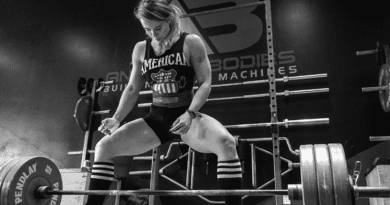
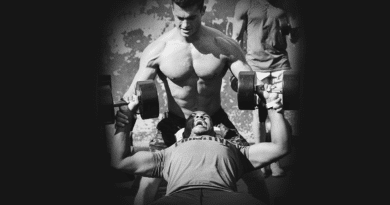
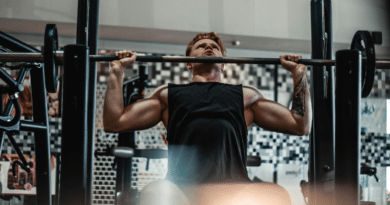
Comments are closed.